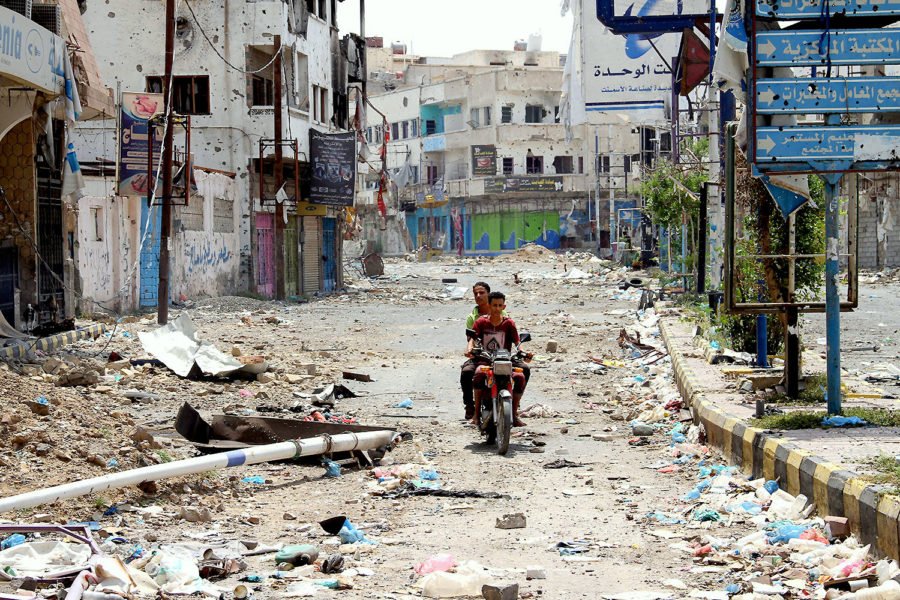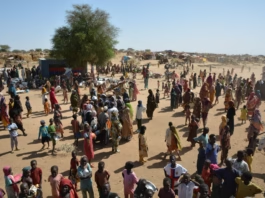Understanding the Current Situation in Yemen
The ongoing conflict in Yemen has reached a perilous stage, shedding light on a multifaceted crisis that not only impacts the nation but also reverberates throughout the Middle East. Initiated in 2014, the war has drawn in various regional powers and fostered internecine divisions, which contribute significantly to Yemen’s instability. This conflict has resulted in one of the world’s most severe humanitarian crises, exemplified by alarming levels of food insecurity affecting millions of civilians. According to recent reports, over 23 million people, nearly 75% of the population, require humanitarian assistance, with 19 million experiencing severe food shortages.
The humanitarian calamity has been exacerbated by the ongoing geopolitical tensions in the region, particularly the conflict in Gaza. The fluctuating hostilities serve as a flashpoint that escalates sentiments of unrest and aggression among factions in Yemen, impacting local power dynamics. Local groups, fueled by regional rivalries and historical grievances, often capitalize on developments in Gaza to justify their actions, further intensifying conflicts. Such a cycle of violence consequently exacerbates the devastating toll on civilians caught in the crossfire, manifesting in widespread dislocation, disease, and economic collapse.
Statistics illustrate the appalling conditions faced by Yemeni people. The World Health Organization estimates that more than 12,000 children have died due to direct conflict exposure, while millions suffer from cholera and malnutrition. Access to health care remains severely limited, with 50% of the country’s health facilities non-operational. Furthermore, the blockade implemented by various factions has cut off essential supplies of food and medicine, making the humanitarian response increasingly difficult.
Given the ongoing deterioration of conditions in Yemen, the need for urgent and coordinated international intervention is evident. The prolongation of the conflict, coupled with increasing levels of suffering for the civilian population, underscores the critical importance of addressing this situation comprehensively and effectively.
Regional Dynamics and Their Impact on Yemeni Conflict
The Yemeni conflict is intricately linked to broader regional dynamics, significantly influenced by interactions between various state and non-state actors. One of the prominent aspects of this situation is the ongoing hostilities between the Houthis, a Yemeni armed group, and Israel. This exchange of hostilities has far-reaching implications not only for Yemen but also for the stability of the Middle East. The Houthis have, on multiple occasions, claimed responsibility for attacks aimed at Israeli interests, reflecting a growing alignment with Iran and its regional adversaries. Such actions divert attention from Yemen’s local grievances, undermining peace initiatives that seek resolution through inclusive dialogue.
The intersection of these conflicts complicates the already fragile Yemeni peace process. As the Houthis engage in regional posturing, they inadvertently escalate tensions that detract from the urgency of addressing the humanitarian crisis within Yemen. The conflict has drawn in various regional players, each with their own agendas, further complicating the prospect of a unified Yemeni-led peace process. For instance, Saudi Arabia’s involvement against the Houthis, supported by its allies, enflames the situation, perpetuating a cycle of retaliation and violence that hinders negotiations aimed at cessation of hostilities.
Humanitarian Catastrophe: The Deteriorating Conditions
The humanitarian crisis in Yemen remains one of the most severe globally, with the country ranking as the third most food-insecure nation. As of late 2023, an estimated 21 million individuals, approximately two-thirds of the population, require immediate humanitarian assistance. This dire situation is exacerbated by various obstacles hampering aid efforts, including both funding cuts and operational barriers, which significantly undermine the delivery of essential support.
Funding for humanitarian initiatives in Yemen has seen substantial reductions in recent years, resulting in a severe shortfall in resources necessary to address the widespread food insecurity and health crises. Donor fatigue, coupled with competing global needs, has hindered the allocation of sufficient financial commitments to Yemen’s deteriorating conditions. Consequently, international agencies are forced to scale back on critical services, leaving millions without basic necessities.
Operational challenges also complicate the delivery of aid to those affected by the ongoing conflict. Insecurity, road blockages, and bureaucratic hurdles impede the work of humanitarian workers striving to reach vulnerable populations. In many instances, aid convoys are unable to deliver food and medical supplies, while the restricted movement of personnel leads to diminished access to healthcare services. The health system, already on the brink of collapse, struggles to cope with the escalating demand for services, particularly in maternal and child health.
The repercussions of this worsening humanitarian crisis extend far beyond immediate needs; they affect the long-term stability and recovery of the nation. Malnutrition rates soar, particularly among children, who require adequate nutrition for healthy development. Without decisive intervention, the humanitarian situation in Yemen could devolve further, resulting in irreparable harm to both the population and the country’s prospects for recovery, ultimately emphasizing the urgency for a unified international response.
International Responses and the Path Forward
The international community’s reactions to the ongoing conflict in Yemen reveal a complex landscape of geopolitical interests and humanitarian considerations. Western nations, particularly the United States and members of the European Union, have generally advocated for a ceasefire and emphasized the importance of protecting human rights and humanitarian principles. These nations have also condemned the detention of UN personnel by the Houthi rebels, viewing such actions as violations of international law and an impediment to peace efforts.
In stark contrast, countries like Russia and China have taken a more cautious approach, often expressing support for the Houthis while advocating for non-interference in what they regard as an internal Yemen issue. Their positions highlight a differing perspective on international intervention and the role of external actors in the conflict. While Western nations push for immediate ceasefire agreements and a humanitarian response, Russia and China tend to focus on respecting the sovereignty of Yemen and calling for dialogue without external pressure.
The diverging viewpoints underscore the necessity for a united international stance if lasting peace is to be achieved in Yemen. A Yemeni-led dialogue, involving various factions of Yemeni society, is paramount in addressing the inherent political and social challenges that fuel the conflict. This local engagement not only fosters ownership but also ensures that any agreements made reflect the diverse needs of the population.
To address these urgent humanitarian crises, the international community must prioritize collaborative efforts that move beyond mere verbal condemnations. Advocacy for a multiparty negotiation framework, alongside increased humanitarian aid and support for rebuilding efforts, presents a viable path forward. Establishing trust among the conflicting parties will be crucial in easing tensions and facilitating a return to stability, thereby fostering a durable solution to the crisis.




